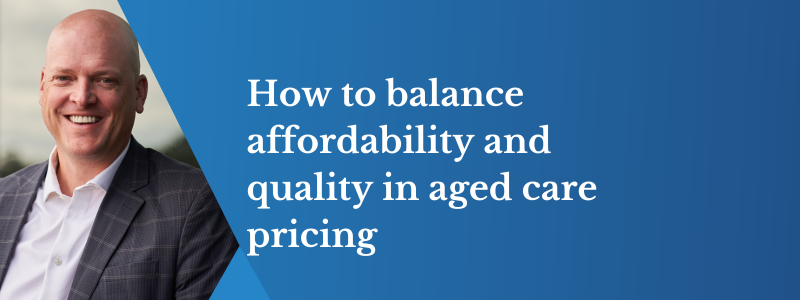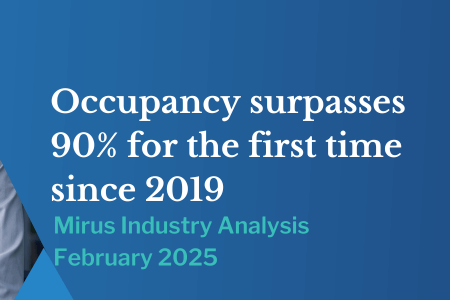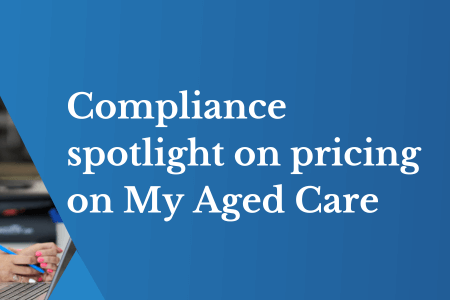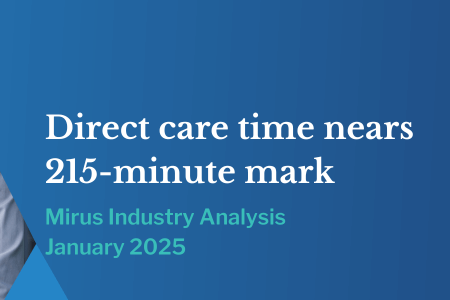Understanding the impact of RAD increases on accommodation pricing
February 7, 2025 | Aged Care Management

By Tyler Fisher, Data Scientist
With sector wide increases in occupancy giving less pressure on pricing, this presents a long-awaited opportunity to increase non-care revenue.
In the first month of the new price cap the sector saw:
- 40 services increase their highest room price from $550k to $750k
- 170 services increase their highest room price from $550k to a higher price
- 400 services increase their highest room price
- 700 services increase at least one of their room prices
What does this change mean for all providers
Recent RAD changes allow providers to set accommodation prices that reflect the quality and amenities offered. An appropriate pricing structure ensures that aged care facilities can meet the substantial operational costs associated with providing accommodation, including maintenance, utilities, and hotel services. However, it should also balance the need for affordability with the absolute necessity of delivering every care recipients’ entitlement to high-quality care. For many older Australians, the cost of accommodation is a significant consideration when choosing an aged care facility. High accommodation prices can be a barrier for some families and each service must understand which market segment it is aligned to.
For providers, this is an opportunity to reassess strategies, enhance financial sustainability, and align with future market demands. To take the guesswork out of accommodation pricing and enable data-driven, confident decisions for your facility, providers can request a personalised Accommodation Pricing Report. This report delivers insights tailored for your facility to help you evaluate your pricing position, plan for future growth, and navigate upcoming changes effectively.
The balance between affordability and quality
Revenue generation in residential aged care is not solely about accommodation pricing. It also encompasses income from government subsidies and supplements and to a lesser degree private payments, and additional charges. These multiple revenue streams must, at a minimum, recover the costs of the services they are linked to. Even though most of a provider’s revenue comes from government subsidies almost all that revenue is spent on the provision of care, and in some cases more. This means that revenue streams from non-care funding are necessary to ensure sustained financial viability amidst changing dynamics. In a regulatory environment prioritising consumer choice and mandated ratios, aged care providers are exploring how to better cater to residents’ needs while adhering to Department of Health and Commission standards.
Effective cost-recovery is critical to ensuring that aged care providers can maintain high standards while keeping their doors open. Without appropriate cost-recovery structures, providers may struggle to meet staffing requirements, maintain infrastructure, or invest in necessary technology and resources.
The challenge for residential aged care providers lies in balancing the affordability of accommodation prices with the quality of services. While aged care residents are entitled to receive high standards of care, the financial realities of the sector mean that there is often a delicate balancing act between charging sufficient fees and maintaining affordability for families.
Recently, there has been increasing concern over the cost of aged care accommodation, particularly for individuals who do not have substantial financial means as well as for many providers who are operating at a loss. This has led to calls for greater government intervention and reforms to ensure that aged care remains affordable for all Australians, regardless of their financial situation. The government has introduced measures such as means testing and caps on accommodation charges to assist with this issue, but there is still much debate about how best to strike the right balance while offering higher quality options for those prepared to pay for them.
Looking ahead
Australia’s over 70 population will grow by one million over the next seven years*. The sharp increase in demand for home care means the requirement for additional residential places is hard to calculate and estimates range from 25,000 to 50,000 new beds. Demographic change means demand for aged care services will continue to grow, while current and future generations of aged care participants have high expectations of what quality aged care looks like. The sector as a whole must work towards building the available infrastructure as well as bolster an appetite for investment in the sector that is sufficient to meet the current and forecasted demand. Providers must reassess their capital management and liquidity strategies with the expectation the RADs will be removed as a payment option within the next ten years.
The government needs to support the sector where workforce shortages are an issue. However, providers need to enhance their workforce by improving pay and conditions, training and technology. This all comes at a cost and requires keen fiscal analysis that produces robust and sustainable strategies.
Despite these challenges, the right strategy, guidance, and technology can help providers navigate these changes effectively. By diversifying revenue streams, providers can enhance care quality, attract residents and families, and ensure long-term financial sustainability. If you’d like to discuss your non-care revenue strategy, please get in touch.
*https://www.aihw.gov.au/reports/older-people/older-australians/contents/demographic-profile?


